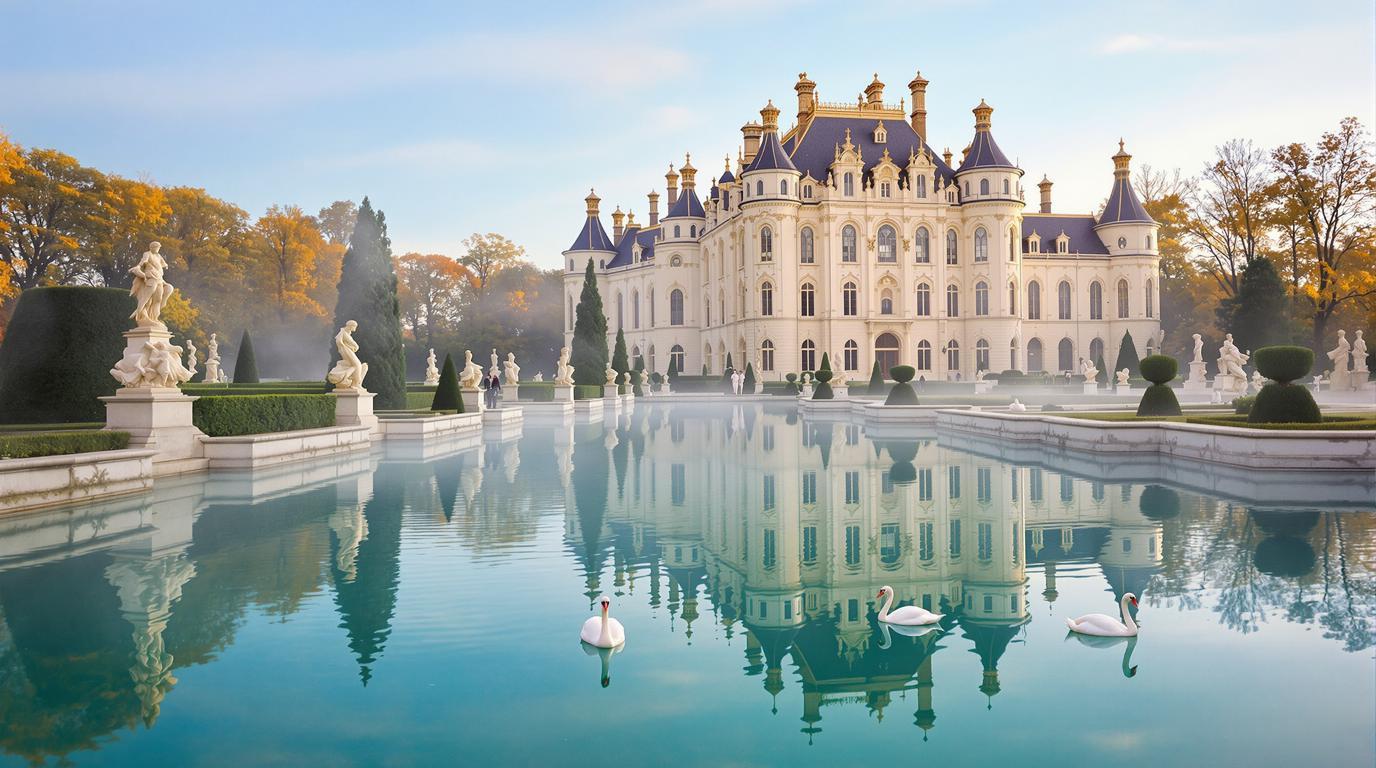The turquoise waters of the Grand Canal reflect perfect symmetry of manicured hedges and centuries-old sculptures. Beyond, a château rises like a fairytale mirage – not in the Loire Valley where tourists flock, but in the lesser-known Oise region just 25 miles from Paris. This is Château de Chantilly, home to André Le Nôtre’s most treasured creation – gardens he himself considered superior to his more famous work at Versailles.
A royal gardener’s masterpiece frozen in time
When Louis XIV’s landscape architect André Le Nôtre designed these formal gardens in the 1670s, he created more than beautiful scenery – he crafted a bold statement of human mastery over nature. The gardens showcase his signature style: perfect symmetry, expansive water features, and optical illusions that make distant elements appear closer than they are. Today, visitors can experience these gardens almost exactly as aristocrats did three centuries ago.
“These gardens are the perfect manifestation of French classical design – geometry, order, and perspective coming together in perfect harmony,” explains François Delahaye, head gardener at Chantilly for over twenty years.
The Grand Canal: reflecting pools of aristocratic power
The centerpiece of Le Nôtre’s design is undoubtedly the Grand Canal – a massive water feature extending over half a mile, creating breathtaking reflections of both sky and château. Unlike similar water features at other French estates, Chantilly’s Grand Canal was actually designed first, with the château rebuilt later to complement it after a revolutionary destruction. This relationship between water and architecture creates a uniquely harmonious visual experience.
Three gardens, three centuries of landscaping philosophy
What makes Chantilly truly special is its preservation of three distinct garden styles side by side. Beyond Le Nôtre’s formal parterres lies an Anglo-Chinese garden from the 18th century, complete with a charming hamlet that later inspired Marie Antoinette’s rustic retreat at Versailles. The third style – a romantic English garden – showcases the 19th century’s reaction against rigid formality, with meandering paths and naturalistic groupings of trees.
Hidden treasures among the hedges
Venture beyond the main attractions to discover the Island of Love, a secluded grove in the English garden where swans glide across peaceful ponds. Another overlooked gem is the Temple of Venus, a small neoclassical structure that provides one of the most picturesque views across the estate. For photography enthusiasts, arriving at dawn when mist hovers over the Grand Canal creates ethereal images unlike anything in more popular French destinations.
“What makes Chantilly magical is how the light changes throughout the day. Morning fog transforms the gardens into something from a dream world,” notes Claire Dubois, local photographer and garden historian.
Beyond the gardens: equestrian elegance
No visit to Chantilly is complete without experiencing the Grandes Écuries (Great Stables) – among Europe’s most magnificent equestrian facilities. Built in the 18th century when the Prince of Condé believed he would be reincarnated as a horse, these stables now host dazzling equestrian shows that showcase the property’s continuing connection to French aristocratic traditions. Like Africa’s breathtaking wildlife experiences, these performances create unforgettable memories.
Practical tips for garden enthusiasts
Visit in spring to see tulips in spectacular bloom or autumn for golden foliage reflections in the Grand Canal. Comfortable shoes are essential – the full garden tour covers significant distance. To avoid crowds, arrive when gates open at 10am. For those with limited mobility, electric carts are available for rent, making this historical treasure accessible to everyone, much like how hidden renaissance gardens can be enjoyed by all visitors.
For travelers who’ve already explored Turkey’s gleaming white terraces or Bavaria’s fairy tale castles, Chantilly offers something equally magnificent yet refreshingly uncrowded. Like Greece’s hidden coastal gems, these gardens reward those willing to venture beyond obvious destinations.
As shadows lengthen across Le Nôtre’s geometrical masterpiece, visitors often find themselves alone with centuries of history, the chirping of birds, and the gentle splash of fountains. In these moments, Chantilly doesn’t just showcase French garden design – it offers a portal to an elegant past, preserved in living green splendor just a short train ride from Paris.
